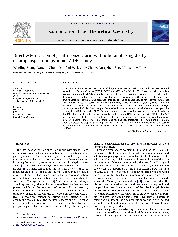摘要
Direct esterification reaction mechanism of the p-nitrobenzoic acid with n-butanol have been studied using density functional theory (DFT) by B3LYP and M06 with a 6-311++G(d,p) basis set, with the polarized continuum model (PCM) to simulate the solvent effects of pyridine. This project sheds light on the detailed processes of the title reaction proceeding along two channels: with the diethyl chlorophosphate (DECP) absence (channel a) and presence (channel b). The calculated results have demonstrated that channel b smoothes the reaction by reducing the energy barrier, which is in good agreement with the experimental observations. Especially, in channel b, for yield of the important intermediate of carboxylate-phosphate anhydride (CPA), two possible mechanisms have been proposed: channel b1 suggests the carboxylic acid R1 reacts with DECP via a four-membered ring transition state, while channel b2 advises that R1 will dissociate to its relative carboxylate radical anion R1' before reacting with DECP by the S(N)2 mechanism. The calculated results indicated that channel b2 shows the more energy-favorable mechanism. The natural bond orbital (NBO) charge analysis has been implemented to gain more information about the electronic properties and to prove the feasibility of each reaction step. Moreover, the reasons for how and why the introduction of DECP could make the reaction easier to occur have also been clarified.
- 出版日期2011-1
- 单位郑州大学
